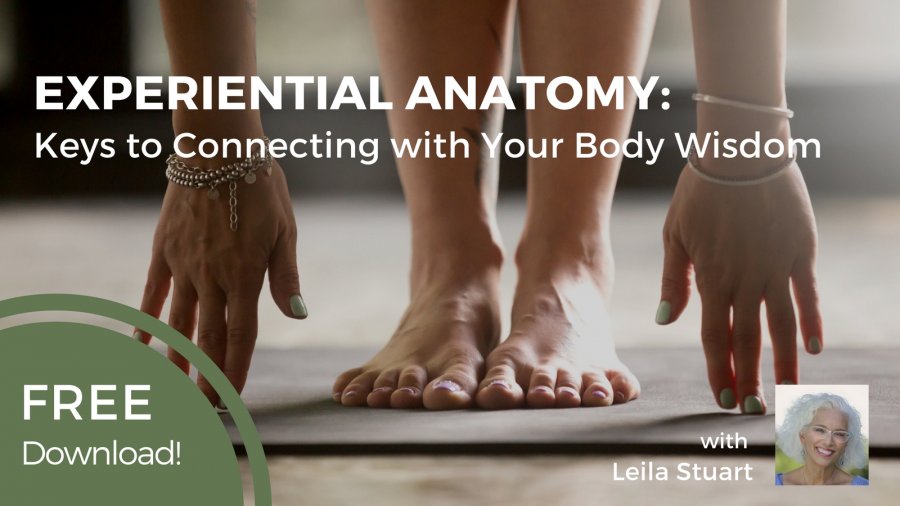Free Download! Experiential Anatomy - Keys to Connecting with Your Body Wisdom
Course Info
- Price:
- $0.00
Leila Stuart
 Leila Stuart, BA, LLB, RMT (Registered Massage Therapist - retired), has been a dedicated and ever-evolving student of yoga for over 40 years, and has been teaching yoga since 1993. Drawing on her passion for anatomy and her background as a massage therapist specializing in structural alignment and...
Leila Stuart, BA, LLB, RMT (Registered Massage Therapist - retired), has been a dedicated and ever-evolving student of yoga for over 40 years, and has been teaching yoga since 1993. Drawing on her passion for anatomy and her background as a massage therapist specializing in structural alignment and... 
Anatomy is a useful tool, but it becomes truly powerful when we begin to use it not just mentally, but experientially. Experiential anatomy, Leila Stuart explains in this talk, is a non-intellectual “felt” experience processed by different parts of the brain. With experiential anatomy as a guide, yoga becomes a therapeutic practice: People understand the limitations of their individual structure and they know how to work with their abilities.
Experiential anatomy has numerous applications off the mat as well. In our modern society, Leila points out, we tend to be divorced from our body and all the important signals it is constantly sending us. Learning experiential anatomy offers a pathway to learn to tune into the body and our inner somatic wisdom.
Every part of the body, Leila notes, is associated with some particular aspect of being human. The arms and the shoulders, for example, are about giving and receiving. They tie into the experience of reaching out, or not being able to reach out; of wanting to punch someone and not doing that so that impulse gets frozen. The legs and feet have to do with grounding, our sense of support in life, and our ability to be present.
The way that we meet the ground is through feet patterns, which determine what happens in the rest of our body, Leila explains. If there’s a lack of support from below, the body has to go through all sorts of compensations in order to keep the eyes level with the horizon. This in turn often will distort the body (the spine, the pelvis, all different parts) in numerous ways.
Leila also discusses the fundamentals of good foot alignment, and how the weight of the upper body is transferred into the ground through three points in the foot, i.e. the “foot triangle.” She notes that the “foot triangles” are powerful centers to help us anchor our psychological footing and gain the ability to remain present and vital in the face of challenges.
Check out Leila's course, Standing on Your Own Two Feet: Experiential Anatomy of the Foot.